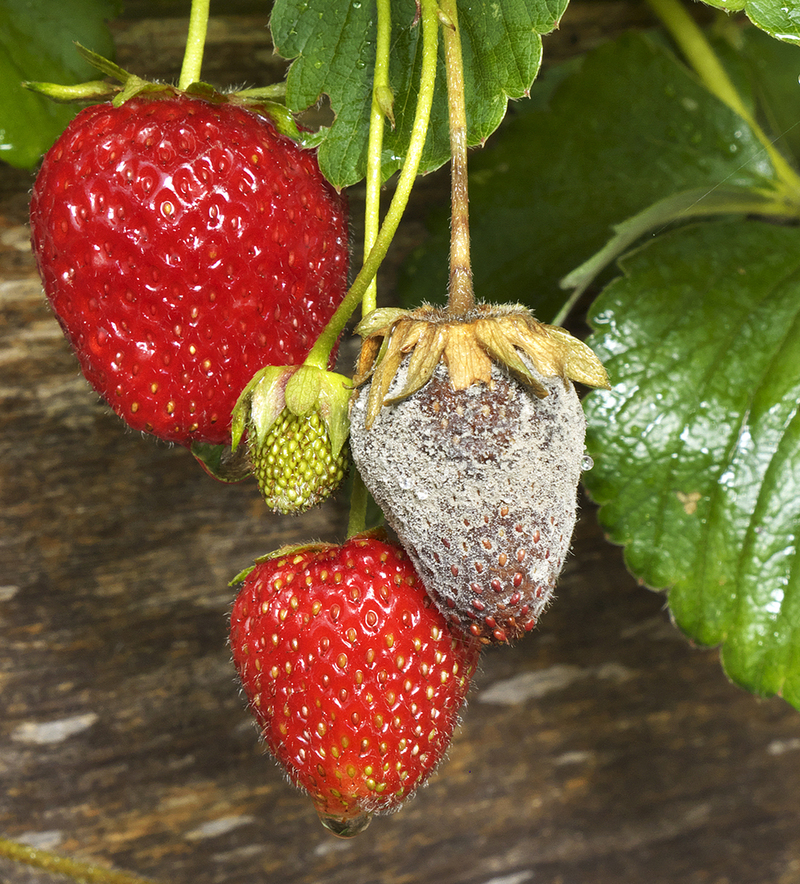Plant growth promotion & crop resilience
Botrytis is an above-ground fungus, and there are many species. The fungus is found all over the world and can infect a wide variety of plants. If conditions are unfavorable, the damage can get out of hand. To avoid this, it's important to know the following 'Botrytis facts'.

- Botrytis is also called 'grey mold'. This name indicates exactly what the fungus looks like: grey powder on leaves, flowers, fruit, or the stem.
- The fungus penetrates the plant cells with a pollen tube, kills them, and feeds on the contents of these dead cells.
- Botrytis loves soft plant parts, such as soft fruit, petals, and lush leaves. Crops with firm leaves are much less attractive and are therefore at a lower risk.
- The species Botrytis cinerea can affect more than two hundred different crops, including strawberry and grape. This fungus has also changed its name and is now officially called Botryotinia fuckeliana. Other Botrytis species are fussier and more specialized.
- Botrytis cinerea can withstand the cold like no other and is even active at very low temperatures (up to 0°C).
- The fungus survives on plant parts, bulbs, or in the ground.
- The spores of the fungus germinate in moist environments or at very high humidity (> 93%).
- Even moisture released by wounds (e.g., after leaf picking) is enough for the mold spores to germinate. That's why it's important to work cleanly and neatly.
- Prevention is the way to fight this fungus. How? By ensuring good but not too lush growth, ensuring enough air movement in the crop, and disposing of affected parts in a plastic bag.
- Focusing on plant resilience has a lot of benefits and reduces the chances of the fungus taking hold. Applying fungicides like Trianum can help you protect the crop against diseases.